Ring Around the Moon
- By Maggie Masetti
- July 10, 2012
- Comments Off on Ring Around the Moon
It all started when my friend Craig mentioned that there was an upcoming annular eclipse that would be visible from the US. And that maybe we should go to Portland to visit it. Or better yet, Arizona, where the skies would be much more likely to be clear!
Solar eclipses occur when the Moon passes between the Sun and Earth, blocking the Sun from view, and also casting the Moon’s shadow back onto the Earth. Whether or not you see this depends on where you are viewing the event from. The Moon’s shadow will make a track across the Earth, and depending on whether or not you are in that track, you might see a total eclipse, a partial eclipse or nothing!
Once in a while, you will get something called an annular eclipse, which is when the Moon and the Sun are exactly in line – but the apparent size of the Moon is slightly smaller than the Sun. (The fact that usually they have the same apparent size is the reason we get the spectacular total eclipses that we do!) During an annular eclipse, since the Sun is slightly larger in apparent size, you will see a “ring of fire” around the Moon.
Of course it’s not safe to look directly at the Sun, so to see an eclipse, you need eye protection. You can use welder’s glass, or specially made “eclipse glasses”, or even several layers of mylar. Best of all, there are special filters for telescopes that will allow you to view the sun, often with spectacular results.
I’d seen an annular eclipse before, when I was in college. It was a cool experience, so when Craig brought the idea of seeing this one up, I was all for it. What made it even more appealing was that this annular eclipse was going to be at sunset – and the sun would set still partially eclipsed! The idea of a sunset eclipse over the canyonlands of Arizona sounded really beautiful.
And since the eclipse was going to be on a Sunday (May 20th, 2012), it seemed like we could fit the trip into a weekend. So several of us headed out to Arizona on a Friday and met up with a local friend of mine. After a few days of sightseeing which included the South Rim of the Grand Canyon, Rainbow Bridge, Glen Canyon Dam, and Antelope Canyon, we got ready to see the eclipse we’d traveled all that way to see!
A viewing site had been organized by the Parks Service at the Wahweap Overlook. There was going to be an astronomy club with telescopes and shuttle service, so that’s where we decided to view the eclipse.
Boarding the “Solar Express”:
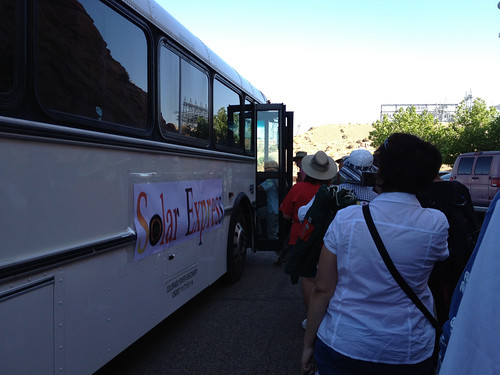
As you can see, the Wahweap Overlook was a great place to observe an eclipse. It had a beautiful view of Lake Powell to one side and a clear horizon on the other.
You can see the tents and telescopes already set up:

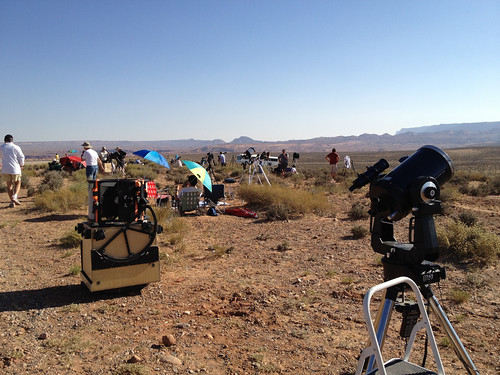

It was fun to watch the eclipse with other astronomy nerds – a big cheer went up with the Moon made first contact with the Sun. The other astronomy buffs were also happy to share their telescopes, which was really generous. One of them had a Hydrogen-alpha filter and with it you could actually see prominences on the edge of the sun and even see the granulation on the sun itself.
If you were lucky, sometimes you could get a decent shot with your camera through the telescope.
Somehow I managed to get a self-portrait of myself doing this!
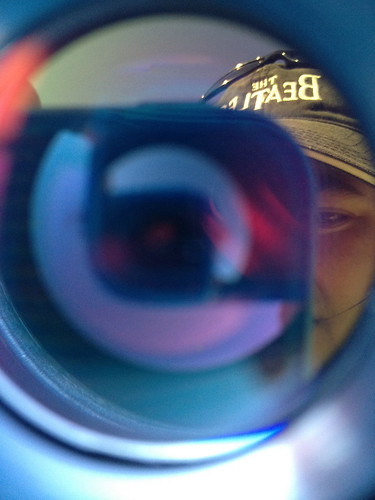
And here is the actual eclipse. The image is upside down because telescope eyepieces flip the image. You can also make out 2 groups of sunspots. There were actually 3, but the first one is obscured here by the Moon.
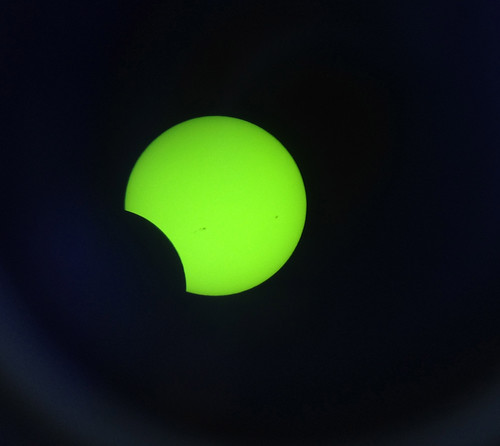
When the sun was eclipsed it was actually noticeably cooler and dimmer – it was a neat effect. Here is our group. We had binoculars covered with two layers of high-grade mylar, welder’s glass, eclipse glasses, cameras with mylar filters, and a telescope that had a viewfinder we used as a pinhole camera, to project the eclipse.
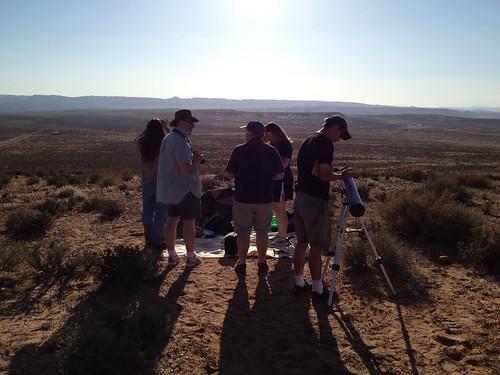
Here’s my husband projecting the eclipse onto a postcard:
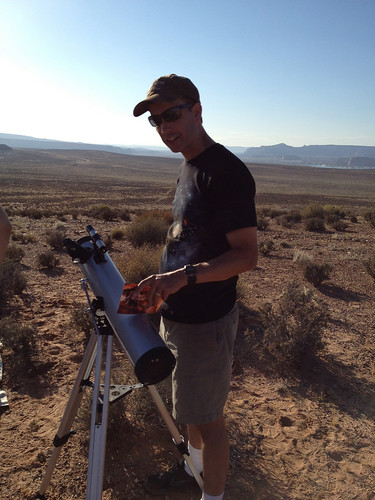
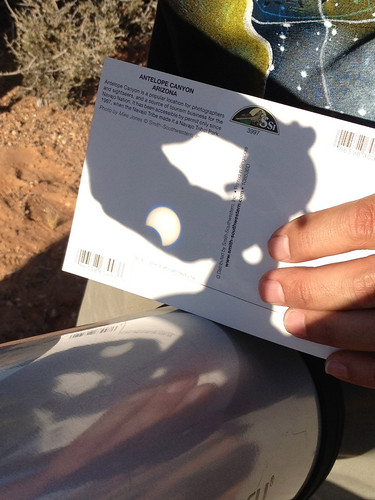
Meanwhile, through the telescope, another sunspot group has been eaten:
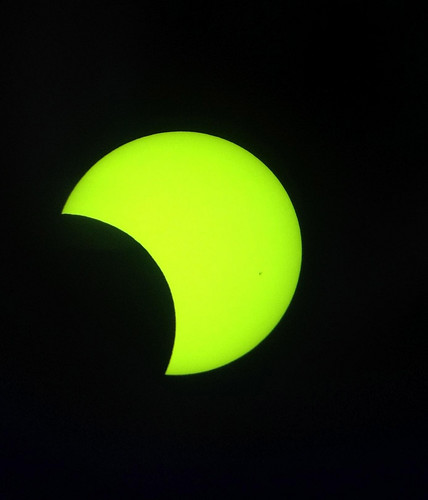
Fellow observers:
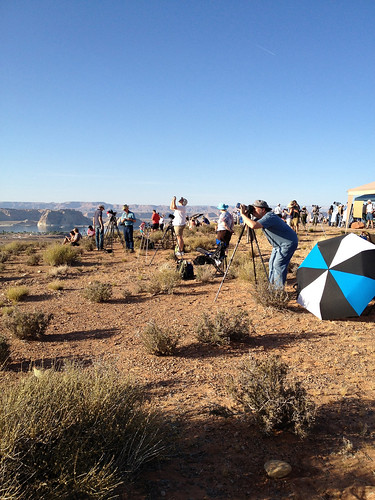
Here we have just a crescent Sun. I can tell because there is a burnt out pixel or a pinhole in my camera and when I took pictures of the Sun, the pinhole would show the actual shape of the sun!
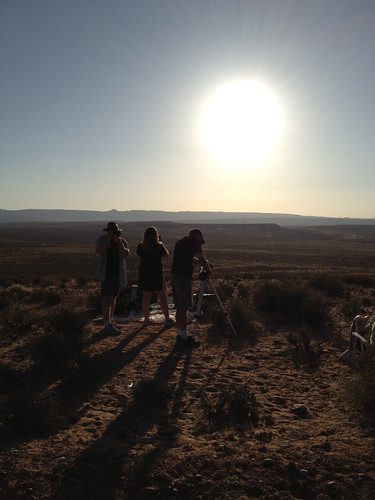
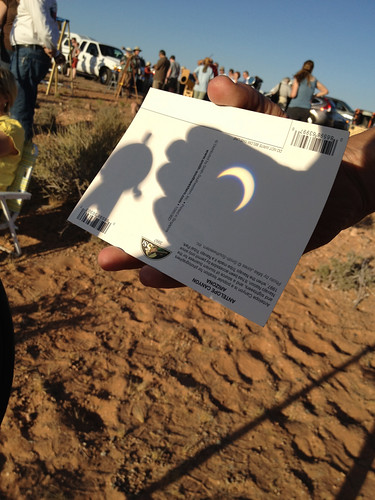
One of my friend Michelle’s photos, through the mylar filter, showing the Sun almost at annularity…

Credit: Michelle Kinseth
…And at annularity:

Credit: Michelle Kinseth
At annularity, I took a photo of Michelle – you can see how dim the lighting is, even if you can’t see the shape of the sun itself. Though that little pinhole pixel is a ring!
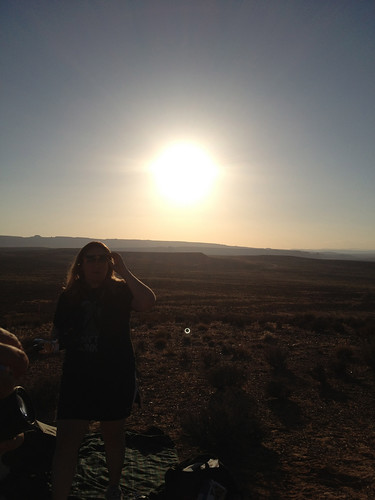
As the Moon kept moving, you can see “Bailey’s Beads” in this photo of Michelle’s. Bailey’s Beads are a phenomena you see because the Moon isn’t smooth, and so when the edges of the Sun and the Moon meeting, you can see beads of light shine through the uneven topography on the limb of the Moon. The crowd was very excited to see the Bailey’s Beads – another cheer went up for them and for each contact point between Sun and Moon.

Credit: Michelle Kinseth
At this point the Moon was starting to move away from the Sun and the Sun itself was setting.

Through a telescope, two sets of sunspots are again revealed:

All three sunspot groups:
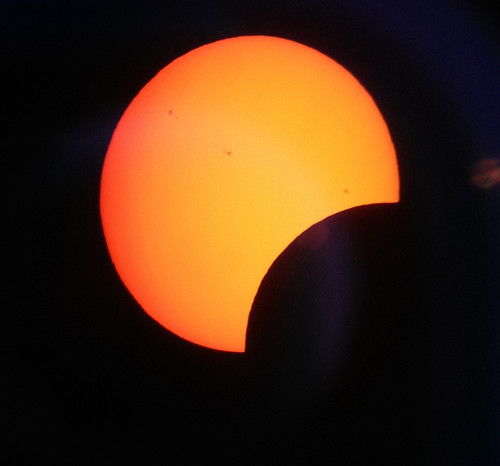
The overlook lit by a partially eclipsed, setting Sun:


My friend Tim got some great shots of the Sun eclipsed by the Moon and the horizon:

Credit: Tim Reichard
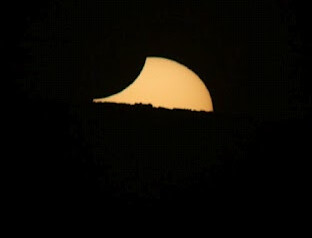
Credit: Tim Reichard
And then it was gone!
It was a unique experience – I’m so glad I was able to see it!


